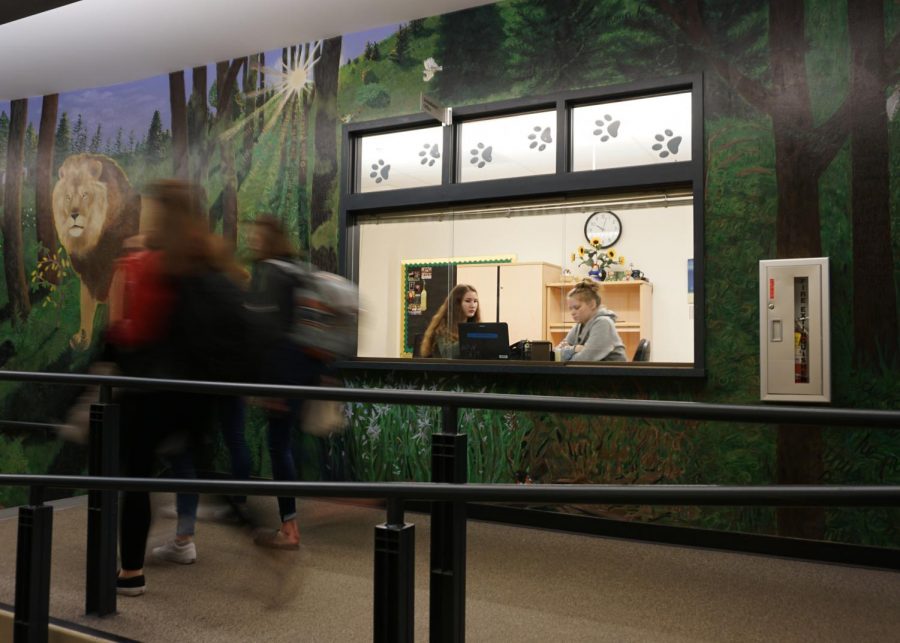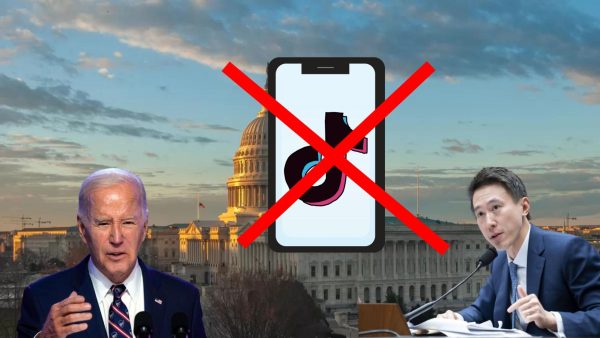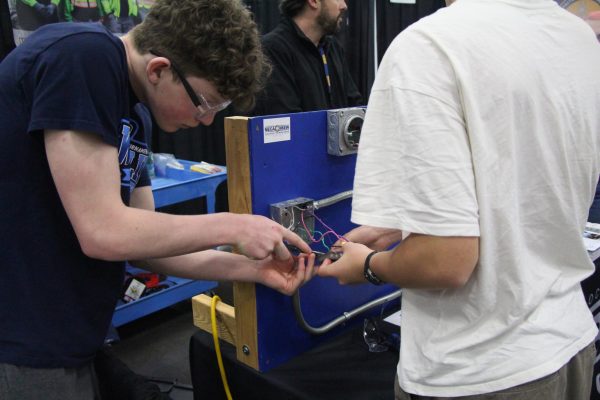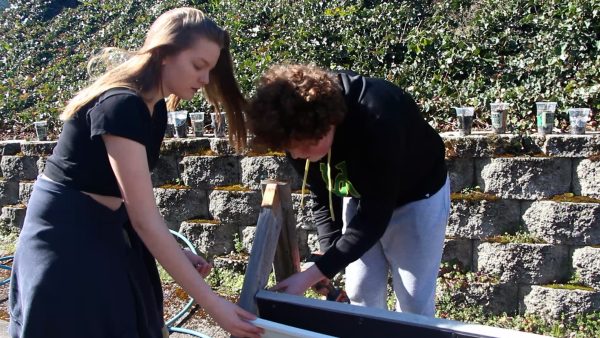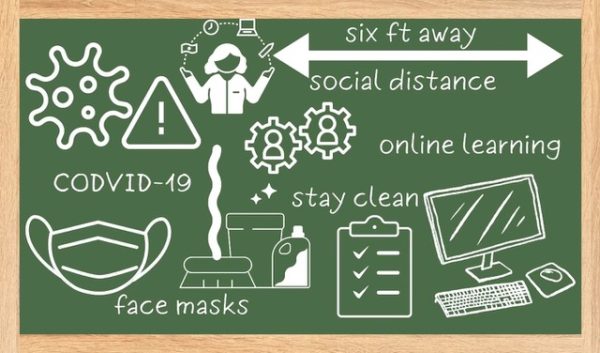Admin to reinforce attendance policy second semester
Use of sign-out sheets, hall passes, designated work spaces aim to reduce absences
Since October, school administrators have been working to address chronic absenteeism. New changes to “help reinforce” existing policy came with the beginning of the new semester on Tuesday, according to Kevin Mills, principal. “We strongly believe that your academic success is tied to your classroom experience and your exposure to being in that classroom,” Mills said.
Sign-out sheets and new hall passes greeted students on Tuesday when they arrived to begin the second semester. Although the school attendance policy has not changed, administration has adopted several changes to reinforce the existing rules, as outlined in the sixth section of the student handbook.
“Right now,” Kevin Mills, principal, said, “It’s about reminding kids that they need to be in class.”
As of Jan. 30, each classroom has a clipboard by the door with a chart for students to write their names and the time when they leave the room and return.
The large, pink hall passes have been replaced with new plastic badges. The 2-by-3-¼-inch hall passes are color coded to distinguish five zones: the first floor of the main building, upstairs, the 700 Building, the Performing Arts Center, and P.E. and Wellness classes.
“I shouldn’t be over in the music building if my class is C201,” Trevor Menne, vice principal, said. “It’s just a quick, visual reminder of that.”
For late arrival and early release, students are discouraged from occupying classroom porches and the senior couches. Instead, administration has designated several workspaces: the library, the Commons and Student Street. During breaks and lunchtime, all spaces are open.
“It’s not really a big change,” Menne said. “It’s just a renewed focus on enforcement of some of our policies we already have.”
Consequences are not formally outlined for students who repeatedly violate attendance policy. Based on the circumstances, administration may contact parents, communicate with teachers or assign community service.
Though some students have expressed concerns, the renewed focus on class attendance is not meant to be disciplinary, according to Mills.
“This is not a negative, punitive thing,” Mills said. “Really, what this is is just a reminder that being in the classroom is important. Realistically, most of us are doing that anyway. It’s not going to change anything with the day-to-day.”
Administration had been discussing attendance issues since October, following a state report, according to Mills.
“Our chronic absentee percentage was higher than what we believed it should be,” Mills said.
Chronic absenteeism is defined as missing 10 percent or more of school days, according to the Oregon Department of Education.
“We strongly believe that your academic success is tied to your classroom experience and your exposure to being in that classroom,” Mills said. “Anything that can help reinforce that, I think, is going to help us become even more successful than we already are.”
Your donation will support the student journalists of West Linn High School. Your contribution will allow us to continue to produce quality content by purchasing equipment, software, and continuing to host our website on School Newspapers Online (SNO).

Amateur magician and wannabe improv comedian Philip Chan has been writing for The Amplifier since his freshman year. Now co-editor in chief, Chan firmly...

























![Game, set, and match. Corbin Atchley, sophomore, high fives Sanam Sidhu, freshman, after a rally with other club members. “I just joined [the club],” Sidhu said. “[I heard about it] on Instagram, they always post about it, I’ve been wanting to come. My parents used to play [net sports] too and they taught us, and then I learned from my brother.”](https://wlhsnow.com/wp-content/uploads/2024/03/MG_7715-2-1200x800.jpg)
![At the bottom of the third inning, the Lions are still scoreless. Rowe stands at home plate, preparing to bat, while Vandenbrink stands off to the side as the next batter up. Despite having the bases loaded, the team was unable to score any runs. “It’s just the beginning of the season. We’re just going to be playing out best by June, [and] that’s where champions are,” Rowe said.](https://wlhsnow.com/wp-content/uploads/2024/03/IMG_3077-1200x900.jpg)





![The teams prepare to start another play with just a few minutes left in the first half. The Lions were in the lead at halftime with a score of 27-0. At half time, the team went back to the locker rooms. “[We ate] orange slices,” Malos said. “[Then] our team came out and got the win.”](https://wlhsnow.com/wp-content/uploads/2023/10/IMG_2385-1200x800.jpg)







































































